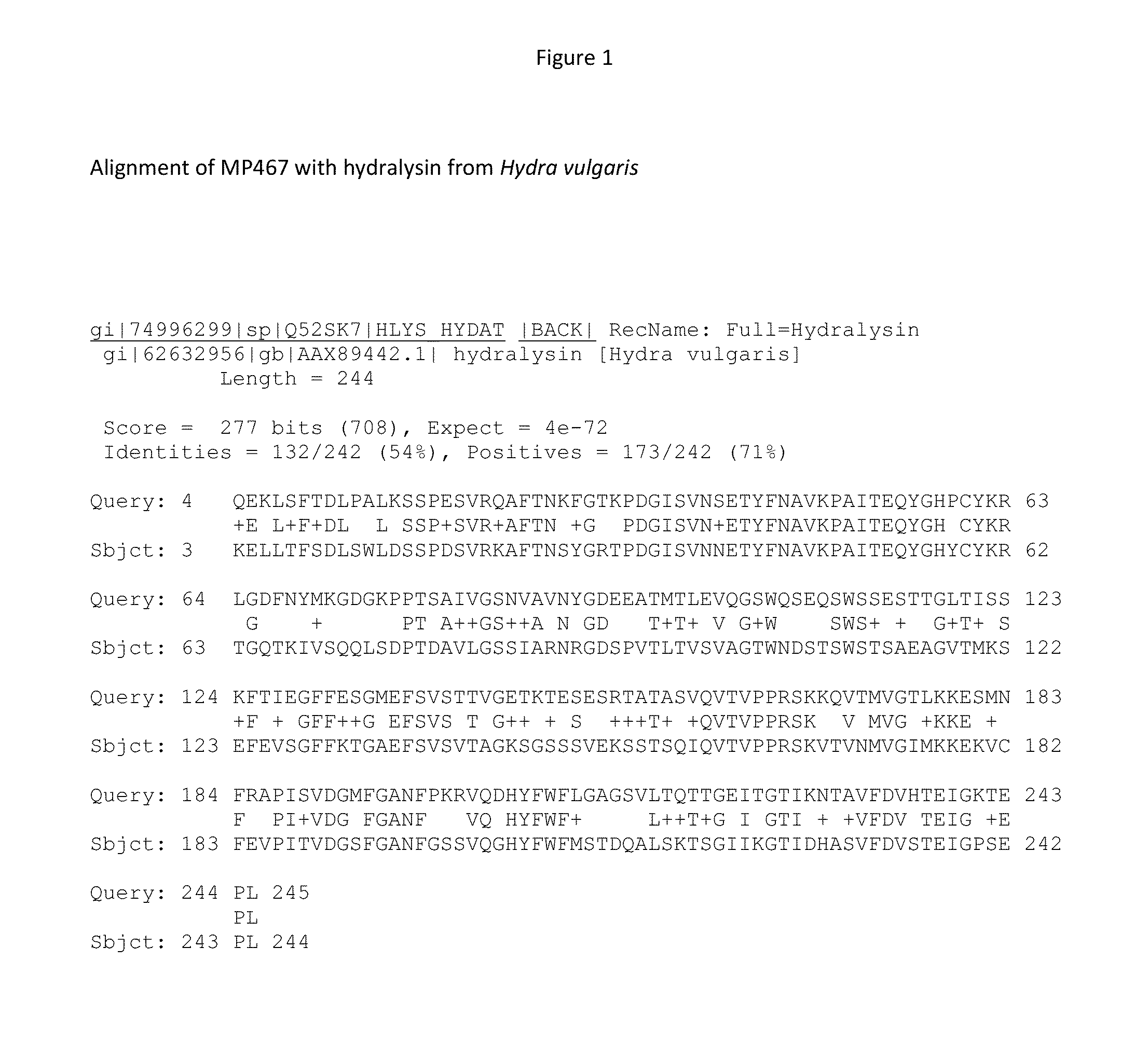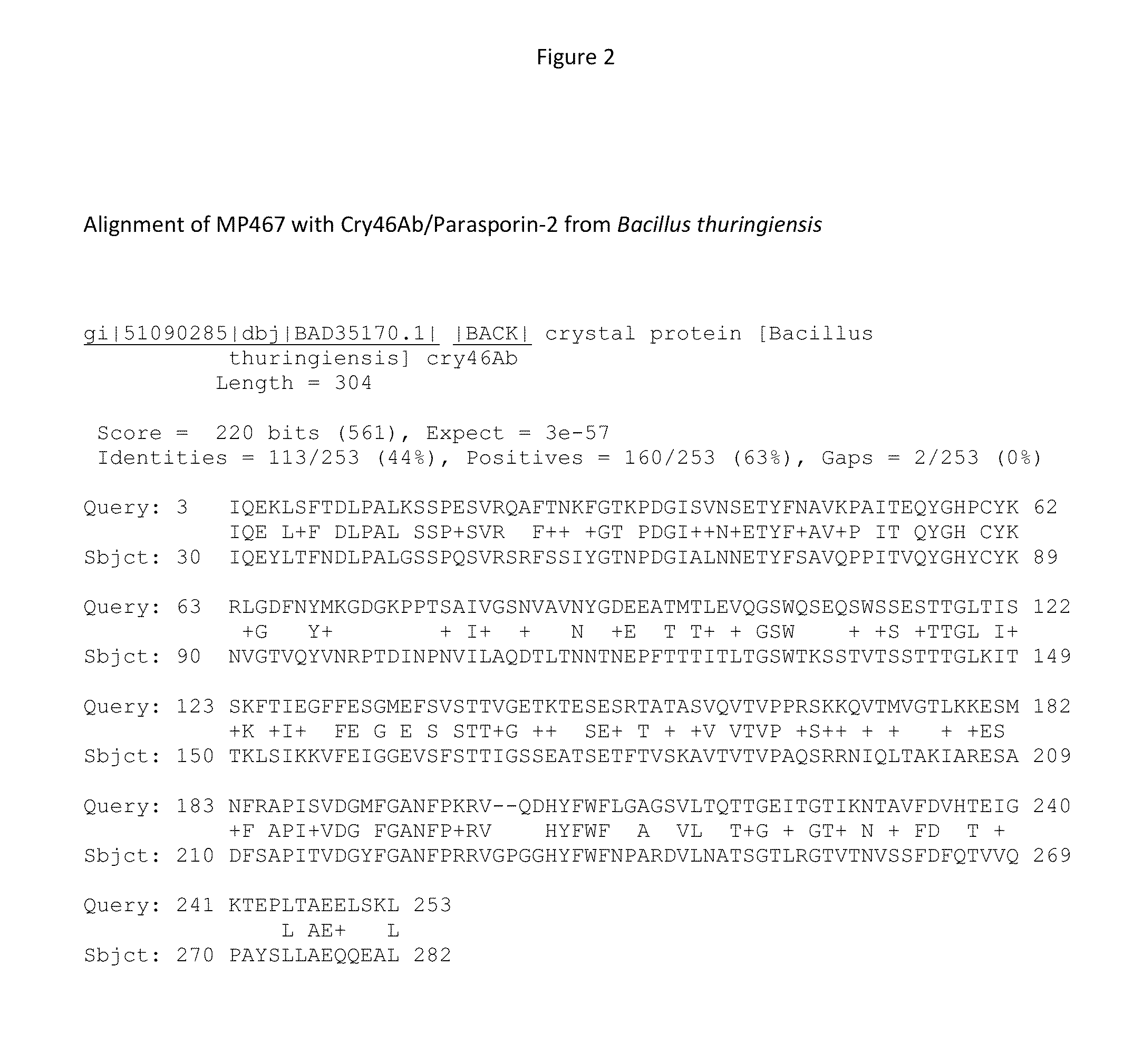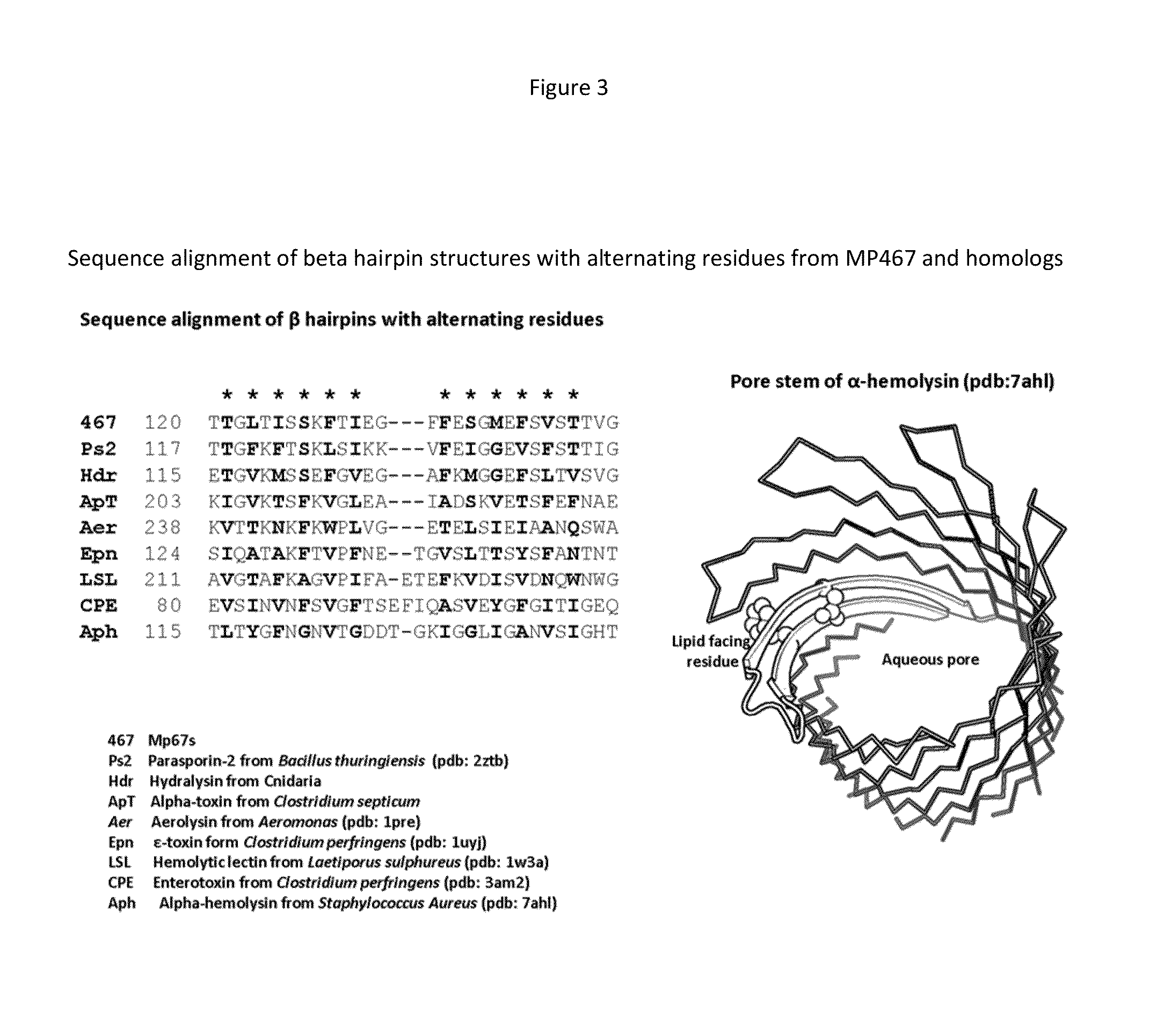Insecticidal proteins and methods of use
a technology of insecticides and proteins, applied in the field of insecticide proteins and methods of use, can solve the problems armyworm feeding, black cutworm damage, etc., and achieves the effect of affecting the economic viability of agricultural producers, and affecting the viability of agricultural production
- Summary
- Abstract
- Description
- Claims
- Application Information
AI Technical Summary
Benefits of technology
Problems solved by technology
Method used
Image
Examples
example 1
Isolation and Modeling of MP467 and Cry46Aa
[0241]Insecticidal protein MP467 was obtained from a screen of proteins derived from Bacillus sphaericus strain AM1922.
[0242]MP467 homologous sequences were identified by similarity search on the non-redundant database (nr) of National Center for Bioinformatics information (NCBI) using BLAST and PSI-BLAST, Hidden Markov Model profile method (HMMER3) was also used to expand the membership search through two PFAM aerolysin and ETX_MT2 (Clostridium ε-toxin and Bacillus mosquitocidal toxin). Total 485 sequences in the NCBI non-redundant database have a detectable similarity to the mp467s. After redundancy reduction in which two sequences are clustered as one if they are with 95% identical over 95% length, 333 unique sequences are identified. The homologous proteins are found in all kingdoms of life although vast majority of them are bacterial toxins such as aerolysin from Aeromonas (genbank accession:YP_001143607), alpha-toxin from Clostridium ...
example 2
Lepidoptera and Coleoptera Assays with Purified Proteins
[0252]Insecticidal activity bioassay screens were conducted to evaluate the effects of the insecticidal proteins on a variety of Lepidoptera species (European corn borer (Ostrinia nubilalis), corn earworm (Helicoverpa zea), black cutworm (Agrotis ipsilon), fall armyworm (Spodoptera frugiperda), Soybean looper (Pseudoplusia includens) and Velvet bean caterpillar (Anticarsia gemmatalis)), a Coleoptera specie (Western corn rootworm (Diabrotica virgifera)
[0253]Lepidoptera feeding assays were conducted on an artificial diet containing the cleared lysates of bacterial strains in a 96 well plate set up. The cleared lysate was incorporated with the Lepidopteran-specific artificial diet in a ratio of 20 ul cleared lysate and 40 ul of diet mixture. Two to five neonate larvas were placed in each well to feed ad libitum for 5 days. Results were expressed as positive for larvae reactions such as stunting and or mortality. Results were expre...
example 3
Lygus / Stinkbug Bioassay with Purified Proteins
[0257]Lygus (Lygus hesperus) bioassays were conducted using the cell lysate samples mixed with insect diet (Bio-Sery F9644B) in each well of a 96 well bioassay plate (BD Falcon™ 353910). A variable number of Lygus hesperus second instar nymphs (2 to 7) were placed into each well of a 96 well plate. The assay was run four days at 25° C. and then was scored for insect mortality and stunting of insect growth. A series of concentrations of the purified protein sample was assayed against those insects and concentrations for 50% mortality (LC50) or inhibition of 50% of the individuals (ILC50) were calculated.
[0258]The lygus assay was run with 15 2nd stage instars per petri dish with 3 reps per dose. Doses were 40 ul sample at 3 mg / ml MP467 or Cry46Aa+360 ul diet. The assay ran 4 days. Results are in Tables 4 and 5.
PUM
| Property | Measurement | Unit |
|---|---|---|
| temperature | aaaaa | aaaaa |
| temperature | aaaaa | aaaaa |
| pH | aaaaa | aaaaa |
Abstract
Description
Claims
Application Information
 Login to View More
Login to View More - R&D
- Intellectual Property
- Life Sciences
- Materials
- Tech Scout
- Unparalleled Data Quality
- Higher Quality Content
- 60% Fewer Hallucinations
Browse by: Latest US Patents, China's latest patents, Technical Efficacy Thesaurus, Application Domain, Technology Topic, Popular Technical Reports.
© 2025 PatSnap. All rights reserved.Legal|Privacy policy|Modern Slavery Act Transparency Statement|Sitemap|About US| Contact US: help@patsnap.com



